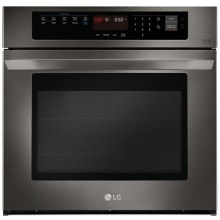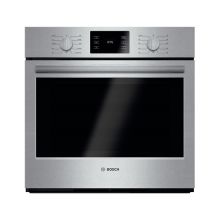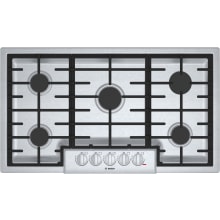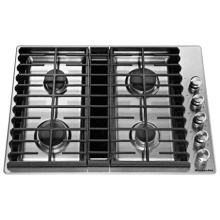Stove Care & Maintenance Tips
With regular maintenance and cleaning, you can significantly extend the lifespan of your stove.

Today’s homes are filled with many time-saving gadgets and appliances. Modern homeowners enjoy the convenience of appliances that wash dishes, cook almost instantly, and practically eliminate the need for an open flame in the home. The stove is a popular cooking appliance that has made meal preparation simpler and faster.
In some homes, these hardworking appliances are used every single day, sometimes more than once. This constant wear will inevitably have an effect on how well and how long the stove works. In order to improve the performance and extend the lifespan of your stove, it’s recommended that you follow a regular routine of maintenance and cleaning.
5 Basic Tips to Simplify Care

The below tips will typically cover both gas ranges and electric ranges, but it is important to refer to your owner’s manual on what to do for your specific unit.
Start Early or Start Now:
Maintenance for your stove will be most effective if you start as soon as you bring home a shining new stove. However, if your stove has been neglected until now, starting right away can still improve the efficiency and life expectancy of the stove.
Be Consistent:
You can plan maintenance and cleaning based on how much you use your stove, but once a month is a pretty good rule of thumb.
Become Familiar With the Owner’s Manual:
You’ll learn a lot of valuable information right off the bat by reading through the manual. For example, is it okay to use a cleaning solution inside a self-cleaning oven? The manual can answer this question for you. (Don’t use the solution unless it was made specifically for self-cleaning ovens.)
Clean Safely:
Follow basic safety rules such as providing maintenance when the stove is cool to the touch and using cleaning solutions according to the manufacturer’s instructions.
Remember to Maintain Your Unit:
Maintenance and cleaning should go hand-in-hand. Once cannot be done without the other in mind, as each one improves the effects of the other.
5 Safety Tips To Remember

Safe use of the stove will naturally keep you and your family safer, and will also reduce unnecessary damages or wear to which the stove is exposed. Follow these simple safety rules:
Install an Anti-Tip Bracket:
It doesn’t cost much and is very simple to install. By installing the bracket you can keep the stove from tipping forward when in use. You can prevent serious injuries to you and your small children. You may also find a number of missing toys and magnets when you move the stove forward.
Watch Pot Handles:
Keep pot handles turned to the side or back. This helps prevent the handles from accidentally getting caught up in loose clothing or a curious child from grabbing it. The last thing you want is boiling water falling on your child, or yourself.
Be Careful Around Steam:
As you lift lids off of pots and pans, the escaping steam can lead to serious burns. Be careful as you lift the lids and try not to keep your hands near the pot for longer than you need.
Be Aware of Splattering & Boiling Foods:
Prevent food from boiling over, hot oil from splattering, and fatting foods from spitting. These situations can all lead to personal burns and will also leave messes on the surface of the stove.
Have a Plan if a Fire Starts:
Unfortunately, fires can happen while you’re using the stove. Have a plan ready in case you find yourself in Keep a fire extinguisher and a can of baking soda within reach to quickly put out any stove or oven fires.
How to Clean Your Stove

1. Choose Your Cleaning Solution
As already mentioned, be sure that you have chosen a cleaning solution that is appropriate for your appliance. Glass top stoves can be damaged by cleansers with abrasives, but a stainless steel stovetop can be cleaned with a strong degreaser. If you prefer to use a natural cleaner, you can combine one tablespoon each of baking soda, salt, and water. Use a soft cloth to apply the paste to tough stuck-on foods and messes.
2. Use Water Sparingly Around Knobs and Dials
If water works its way through the openings around the knob shafts, it could cause switches to short and lead to damage to the interior spark ignition system or other electrical systems. It’s important to use water sparingly around these areas. Instead of spraying water or a cleanser directly on these areas, try using a damp cloth.
3. Clean Both the Exterior & Interior of the Stove/Oven
Any spills, stains, or bits of food can heat up when you operate the stove, whether they are on the inside or the outside of the stove. As the food heats up, it may catch on fire, lead to excessive smoke or cause damage to the surface of the stove, the heating elements, or other components of the stove. Keep indicators on the control panel clean for efficient cooking. Clean the door’s front panel, window, and outer glass to prevent stains.
4. Clean the Interior of the Oven About 3x a Year
If you do a lot of cooking or if the oven is exposed to spills regularly, you should clean the interior more often than three times a year. Any spills and drips should be cleaned immediately to prevent them from smoking and catching on fire.
Avoid the use of any detergents or soaps on the interior of the oven, whether it is self-cleaning or not. Only use cleaners that are recommended by the oven’s manufacturer. Run the self-cleaning feature after large spills and the racks have been removed. Wash racks in a sink of hot, soapy water.
Maintenance and Repairs for Stoves

If you follow a regular cleaning routine, you will find that the necessary stove maintenance will be much easier for you. Routinely check components such as the light bulb and elements. These cane easily be replaced as necessary, without the help of professionals.
By doing these replacements yourself, you can save a bit of money. Always remember to unplug the stove before working on it, and if possible, refer to your owner’s manual before attempting any repairs, no matter how minor they may seem.
Replace the Light Bulb:
If there is a panel or dome covering the light bulb, remove it. Remove the light bulb and replace it with a new light bulb. Most appliances call for a 40-watt appliance bulb. Verify this with the owner’s manual.
Replace a Bad Element:
If one of the electric elements is not working correctly, it can be removed and replaced by a working burner. Take precautions to prevent the prongs on your new element from getting bent. If the socket looks burned, then it may need to be replaced. There should be a screw that keeps the socket attached to the stove. Remove any screws. Remove the old socket and attach the new socket.

Replace Oven Heating Elements:
Make a visual inspection of any elements that aren’t working properly. Check the fusing system to be sure that the elements are receiving power. Remove any screws that connect the element and then remove the element from its holding brackets. Use the make and model information and the element itself to identify the correct replacement part. Place the replacement in the same position as the old. Reconnect it with the brackets and screws.
Quick Action Matters
Whether the problem is food that spilled onto the bottom of the oven or a pot that boiled over on the stove top, you can prevent many damages by quickly cleaning up the spill. Regular and thorough cleaning should reduce many damages and the need for repairs. Whether you have a new stove or an older model, you can use routine cleaning and maintenance to keep this appliance running for several more years.




